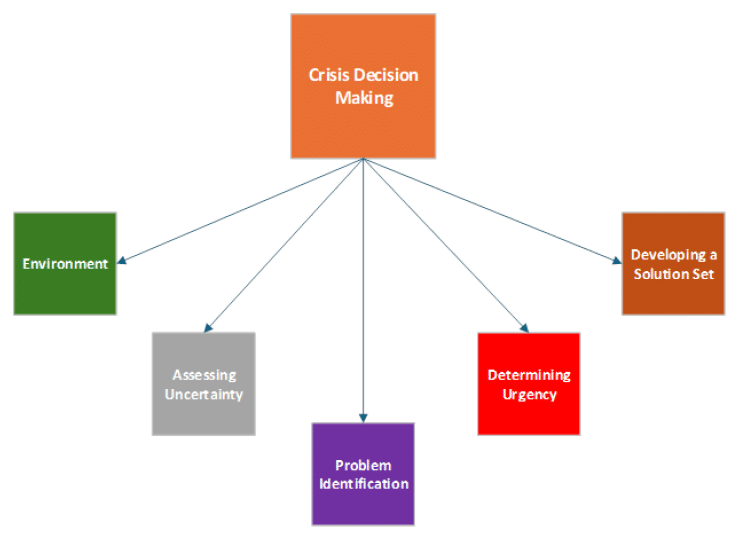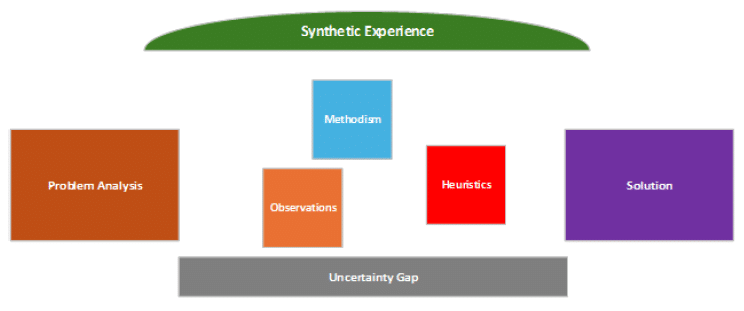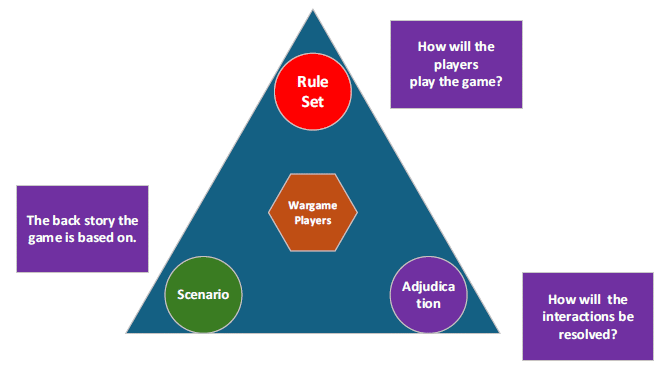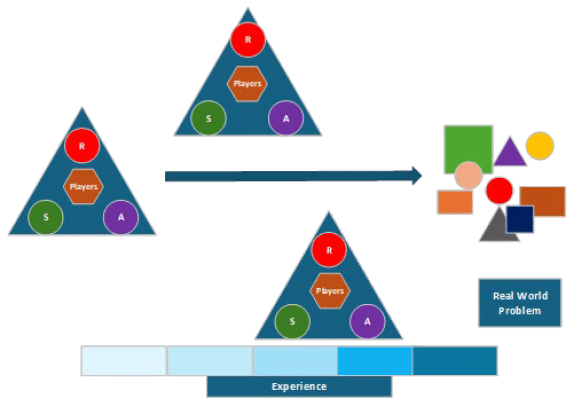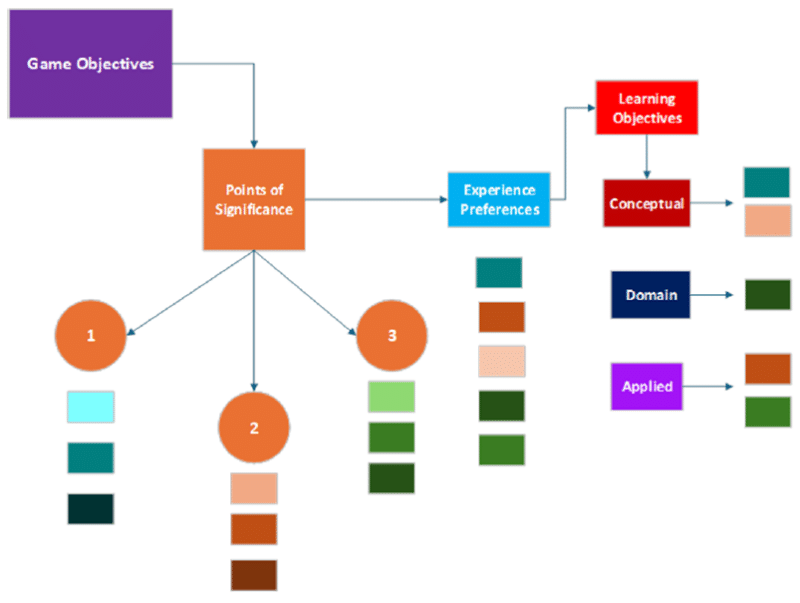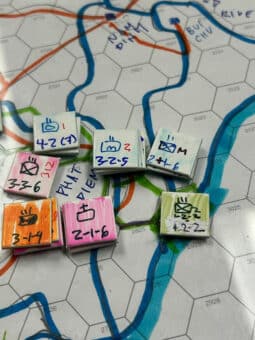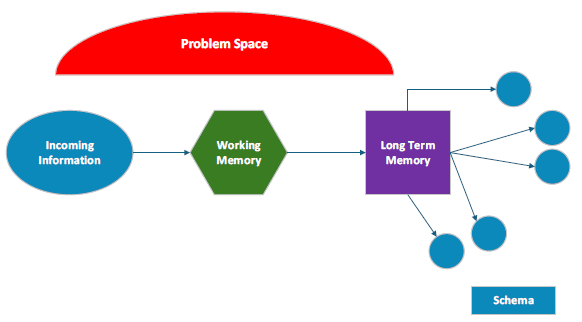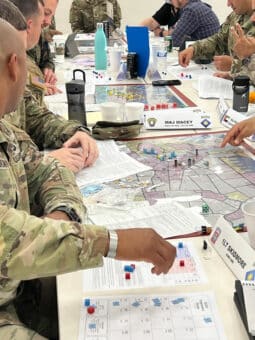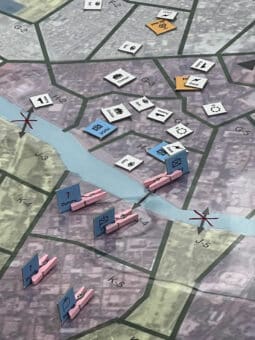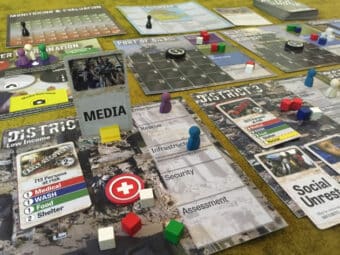Wargaming: Decisions and Synthetic Experience
by Roger Mason
Introduction
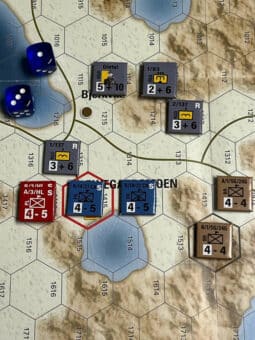
But what if it is impractical to stage the circumstances or wait for the next real-world occurrence as a training opportunity? This is particularly essential in situations of high criticality with a low probability of occurrence, and sometimes a high degree of danger. Is it possible to use table-top exercises and other games — wargames — to develop synthetic experiences in some of these critical domains like higher levels of cognition.
In this article, I will examine how critical decisions are made and how simulated experience in wargames can improve the quality of those decisions. We will explore the use of wargaming as a synthetic experience and evaluate the potential of games as a learning method.
This article will employ an example of a higher function of cognition (dynamic or critical decision making) and use it to examine the possible impact of synthetic experience on decision making. Finally, we will explore how to develop synthetic experiences in wargames and evaluate the secondary impacts of synthetic learning.
Critical Decision Making
The aphorism “Choices are the hinge of destiny,” has been attributed to the Greek philosopher and polymath Pythagoras, and it concisely states an important truth. People make critical decisions every day, and those choices affect what will happen to them and, sometimes, to many others. To model and simulate the decision process it is important to understand the elements of a critical situation and analyze for each step how decisions are made.
The Elements of Critical Situations
In his book Crisis Decision Making: a Cognitive Institutional Approach, Eric Stern offers a description of decision-making in a crisis. He defines crisis in terms of one’s experiencing an environmental change — in the largest sense of those terms — where the decision-maker perceives the presence of a threat, and feels a sense of urgency, and uncertainty. (Stern, 1999).
How are Crisis Decisions Made?
Critical decision makers employ a five-step process of evaluating the relevant environment, assessing uncertainty, identifying problems, determining urgency, and developing a solution.
Evaluating the Environment: “Environment” here is the setting where the elements of the crisis and the actions of the decision-maker coincide.
Assessing Uncertainty: The decision-maker must determine the extent and quality of the available information, including determining the unpredictability of environmental elements and of the characters and probable actions of possible opponents.
Problem identification:: Problem identification involves an evaluation of relevant factors to determine the source, extent, and complexity of the problem. This includes identifying possible patterns familiar to the decision-makers, and their experiences with similar prior events.
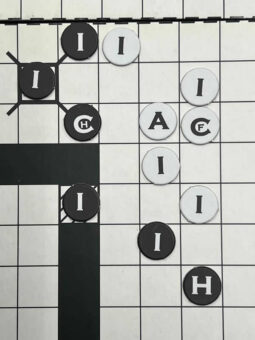
Developing a Solution Set: Once these factors have been evaluated, the decision maker can determine — not absolutely but with a high degree of finality — a course of action.
Decisions and Experience
Decision makers have two clear choices when confronting a critical decision. They can rely on decisions from descriptions or decisions from experience. Decision by descriptions may rely on available knowledge and current observations to evaluate the critical incident. Decision by experience involves employing past experiences to evaluate the problem and develop a solution (Olschewski, Et al 2024).
Filling the Uncertainty Gap
In crisis decision-making, the objective is to move from analyzing the problem to developing a solution; and, since it is a crisis, move quickly. Between problem analysis and developing a solution lies a gap of uncertainty. Decision-makers fill this gap with a series of shortcuts, including
- “Methodism” (not the religious movement but assuming the current problem is like a previous problem and having a standard method of dealing with such problems);
- Observations (evaluating the situation based on immediate perception and immediate feedback); and
- Heuristics (the process of trial and error).
Synthetic experience can fill the uncertainty gap. The decision maker has evaluated past situations and is better prepared to determine if these experiences match the current situation. Observations are more easily validated due to the information the decision-makers have through their experiences. Finally, trial and error is more focused when the results of the trials are evaluated based on immediate, preferably powerful, experience.
Impact of Synthetic Experience
In her article “The Synthetic Experience as an Exoskeleton of the Mind,” Julieta Aguilera proposes that a synthetic experience can initiate, support, and reinforce cognitive processes (Aguilera 2012). Synthetic experiences like playing wargames can help develop knowledge and feedback into a memory that provides the decision-maker experience. Not as strong as physical battles, but actual, useable experience.
Synthetic experience, while artificial, provides valuable support for real-world problem-solving and decision-making. Decision makers employ experiences to develop analogies and simplify problems (Lant, 2002). They take advantage of their experiences by determining utility and evaluating possible actions (Gonzalez, Lerch, Lebiere, 2003).
Conceptual experiences involve learning skills representing the concepts a domain is based on. Domain experiences are related to the unique aspects of the domain. Applied experiences refer to the direct application of knowledge and skills to problem solving.
Adjunct Experiences
Adjunct experiences are useful skills that can be developed by playing games.
Improved Pattern Recognition:
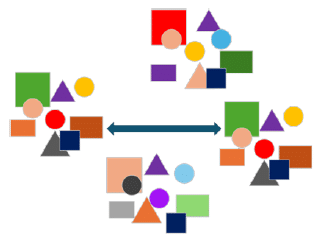
Managing Uncertainty
In the decision process, uncertainty is caused by the inability to evaluate the meaning and impact of relationships. Uncertainty increases as the complexity of the problem is revealed without immediate information to explain it.
Reducing Urgency
Two factors induce urgency in critical decision-making: the complexity of the problem and the possibility of environmental change. Decision makers must organize their response, which includes a variety of cognitive processes. The greater the complexity of the problem, the greater the resources needed to solve it.
The second issue is the potential for environmental change. The moment of change may be known or unknown to the decision maker. The sense of urgency impacts decision-making. Synthetic experiences allow the decision maker to accelerate their response by employing cognitive and experiential resources they have already developed.
Reallocation of Decisional Bandwidth
Decisional bandwidth represents the cognitive resources needed for analysis and problem-solving. By improving pattern recognition, lessening uncertainty, and reducing urgency, the decision maker can re-allocate the cognitive resources that would otherwise be needed.
In The Logic of Failure (1997) Detrich Dorner acknowledges that human decision-makers have cognitive limitations, stressing how we are limited by the amount of information we can process and the speed of our analysis. This often results in relying on trial and error to solve problems more often than is necessary. Being able to focus available cognitive resources on the problem instead of organizing the process is an advantage.
Wargames as a Synthetic Experience
Are wargames synthetic experiences? Wargames are an artificial representation of human conflict where individual players make decisions. In some cases, these decisions are based on maps, rules, and procedures designed to accurately model the actual event. (Wade, 2018)
In the article “Why Wargaming Works,” Peter Perla and Ed McGrady discuss synthetic experience and wargaming.
By creating for its participants, a synthetic experience, gaming gives players palpable and powerful insights that help them better prepare for dealing with complex and uncertain situations in the future. We contend that the use of gaming to transform individual participants — in particular, key decisions makers — is important, indeed essential, source of successful and societal adaptation to that uncertain future. (Perla & McGrady, 2011)
In The Cambridge Handbook of Expertise and Expert Performance, contributor K. Anders Ericsson proposed that “Extended engagement in domain-related activities are shown to lead to improvement of performance.” (Ericsson, 2006). The synthetic experiences derived from a wargame can be compounded by repeating the game. Analog board games are particularly useful because they can be easily modified to explore different areas of interest.
As players play games, they accumulate experience. The value of this experience can be compounded through mental rehearsal. Between games, players can mentally review what occurred, analyze the feedback, and rehearse possible solution sets. As their experiences accumulate, the player becomes stronger and is prepared with fresh knowledge and skills for new problems. It’s like “after action” analysis, but “action” that’s repeatable and in which the only hurts might be to one’s ego.
Designing Synthetic Experience in a Wargame
In a commercial wargame the objective is the playing experience. Pleasure and instruction in the game is enhanced by creating a model that allows the player the opportunity to experience a variety of decision-making and action opportunities within the game environment. Professional wargames have specific objectives involving analyzing a problem, developing/evaluating a course of action, or evaluating a team.
If your goal is a synthetic experience, how can you optimize it? It is possible to move your game design beyond random circumstances that may provide cursory knowledge. Designers should employ a four-step process to evaluate the scenario, identify points of significance, select experience preferences, and design learning objectives.
Evaluating the Scenario
One of Carl Clausewitz’s most famous ideas was the concept of centers of gravity (Clausewitz, 2018). He defined centers of gravity as hubs of power and movement on the battlefield. Wargame designs should be based on centers of significance and learning. Centers of significance are the points where objectives, problems, and opportunities intersect to provide the artificial circumstances the game represents. Learning occurs at specific points within these centers.
Evaluation of the scenario begins by identifying the game’s objective. The game’s design must intersect with the game’s objectives, providing opportunities for creating synthetic experiences. The Interactions illuminate the dilemmas and conflicts along with methods for resolving them. The scenario evaluation should include the narrative of the scenario, the environment where the decisions and actions will take place, and the players’ objectives.
This evaluation clarifies the game’s objectives and reveal the points of significance. Each point of significance contains elements supporting it. You should list the elements of each point. The next step is selecting elements from each point of significance and listing them as experiential preferences.
Developing Experience Preferences
Developing experience preferences is like developing game objectives. In any effective game design, there is a limit where the number of elements and the processes needed to employ them causes a barrier of complications. These preferences represent the experiences you want to emphasize in your game.
 Identifying Learning Objectives
Identifying Learning Objectives
Learning objectives can be divided into three groups: conceptual, domain, and applied. Each is unique, but they can provide a variety of synthetic experiences. Conceptual learning is based on concepts related to gameplay, such as problem analysis, decision-making, and prioritization.
Domain learning is related to the elements of the scenario and the narrative, which represent a specific domain (e.g., wildfire management, mass casualty events, combined arms operations). The learning objective involves the unique aspects of a particular type of event or incident. Applied learning involves the inclusion of specific tasks or game objectives requiring the use of conceptual or domain skills. Applied learning objectives brings the synthetic experience together.
Synthetic Experience and Cognitive Load
Is there a limit to how many synthetic experiences we can introduce into a game?
Can there be too much? In the 1980s John Sweller described an effect he called “cognitive load theory.” (Sweller,1988). He suggested that learning is introduced and retained in three phases: incoming information, working memory, and long term memory. These phases fill a “problem space.” Sweller noted that space problem is the gap between what the learner already knows and what we want to teach them.
Sweller described working memory as a function with limited capacity meaning there is a limit to how much the learner can immediately access and retain. Long-term memory is formed from information that is retained. The memory prioritizes bits of memory and experiences into pieces called schema.
The efficiency of the learning process is determined by what Sweller called the “cognitive load.” Sweller states there are three types of cognitive loads that impact learning. They are the intrinsic load (the information/task to be learned), extraneous load (unnecessary information or noise), and germane loads which are necessary to develop long term memory and produce schema. The heavier the load the more limited the development of long-term memory.
Kahneman and Riis (2005) connected experience to memory. They observed that memories are all we keep from our experiences. If there is a limit to how much we can retain from an experience, how does this impact the development of synthetic experience in games? It seems the more experiences we attempt to introduce the fewer schema will be available from long-term memories.
To optimize the development of synthetic experiences it is essential to limit the number of experience events that are introduced. Introducing more events is like adding more rules to encourage design complexity. In both cases the outcomes are counterproductive with limiting the experiences leading to better recall and adding more rules leading to more complications.
Does Science Support any of These Conclusions?

- Do synthetic experiences improve decision-making?
- Is the value of decision-making perishable, with the gains disappearing in a relatively short time? and
- Do decision-makers rely on experiences or observations they’ve acquired in the games?
Yechiam and Aharon propose that “Experience based decisions can be defined as decisions emanating from direct or vicarious reinforcements that were received in the past” (Yechiam and Aharon, 2012). In a study on instance-based learning in dynamic decision-making Gonzalez, Lerch, and Lebiere suggest that decision makers tend to evaluate a situation based on recognition of experiences in similar situations. “As decision makers interact with a dynamic task, they recognize a situation according to its similarity to past instances.” (Gonzalez, Lerch, Lebiere, 2003).
Putting the Pieces Together
The concepts relating to the development of synthetic experience in games are interesting. It is important to understand how these theories may be put into practice. There are two excellent games that demonstrate how specific synthetic experiences can be built into a game’s design. They are Brian Train’s QUICK game and Rex Brynen’s humanitarian response game called AFTERSCHOCK: A Humanitarian Crisis Game.
Both games are similar. They break down a topic that seems familiar. Instead of focusing on the superficial aspects of the topics they explore the relationships among the elements that comprise the type of event. The warfighters are very familiar with overcoming resistance just as the humanitarians are trained to provide their specific form of relief. In both cases the games provide an opportunity to develop a broader understanding of the event beyond immediate problem solving.
QUICK
Brian Train says, “QUICK stands for Quick Urban Integrated Combat Kriegspiel. QUICK is a fairly simple game on urban large-scale combat operations by elements of a Division/ Group Army. I designed it to be used by students of the Urban Operations Planner Course.”
The US Army Urban Operations Planner Course is an intensive course for the US military and its international allies. The students in the course are familiar with urban combat. What is different about this course is the focus on managing the elements needed to conduct urban operations and understanding the issues that will affect them. These elements include task organization, operations tempo, effects of the terrain on operations, resource and force management, and dealing with civilians in the battlespace.
AFTERSHOCK
AFTERSCHOCK is a game about international humanitarian relief. The scenario is set in a functionalized country but the details are based on real disasters in Haiti and India. This connection to real world events helps to validate the game’s content. Players must provide disaster relief while managing issues such as aid prioritization, coordinating multiple relief actors, internal displacement, logistics, and media relations.
The design takes players to a secondary level of problem solving beyond basic relief operations. Media relations are important as players attempt to maintain political and public support. Social unrest and political unrest are additional factors which can threaten relief efforts. Problem solving involves managing random events in the form of At Risk and Event cards. The result is a dynamic environment requiring a constant balancing act between relief operations and potential disruptors.
Synthetic Experiences
These games introduce the players to a broad spectrum of issues related to the specific type of event. They place the players in the uncertainty gap between analysis and solution. They provide opportunities to analyze problems and develop solutions sets while managing a variety of competing elements.
Both games also provide adjunct experiences such as managing uncertainty, reducing urgency, relocating decisional bandwidth, and improved pattern recognition. They offer players a broader context of operational management and balance. The games go far beyond merely capturing an objective or providing disaster relief. The QUICK game and AFTERSHOCK provide players with valuable synthetic experience for a real crisis.
Summary: But We Have AI……

In the 1990s, the US Naval Academy scrapped its curriculum on celestial navigation. Plotting your position on the earth employing analog devices was considered an antiquated practice. While accurate navigation remains essential to decision-making experience in manually estimating your location, it was no longer necessary. Global Positioning Satellites (GPS) can precisely determine a ship’s location.
This seemed to be the perfect solution until the US Navy learned that peer adversaries to the United States were developing anti-satellite technology, technology designed to eliminate systems like GPS and communications. And we could be confident potential adversaries would continue to develop weapons to take out satellites since we were determined to do so. Celestial navigation as a backup to GPS has returned to the academy’s curriculum. (Prudente, 2015).
Has synthetic experience retained its value in the face of machine learning? As our adversaries attempt to gain advantage by controlling this technology, we should be mindful of the need for a contingency plan. Decision-makers that cannot access AI but have synthetic experience can fill in the gap between problem analysis and reaching a decision. I think Mark Twain said it best, “A man who carries a cat by the tail learns something he can learn in no other way.” Synthetic learning for human beings can teach that lesson and improve decision-making, without harm to the cat or wounds to the human being.
Sources
Aguilera., J. (2012). Synthetic Experience as an Exoskeleton of the Mind.
Technoetic Arts, Volume 9, Issue 2-3, pg. 271 – 276
Chen., J. (2007). Flow in Games (and Everything Else). Communications of
the ACM. Vol. 50, No. 4, pg. 31-34.
Clausewitz, C. (2018). On War. Digireads Publishing: Overland Park, KS.
Csikszentmihalyi, M. (2008). Flow: The psychology of optimal experience.
Harper Perennial Modern Classics: New York, NY.
Dorner, D. (1997). Logic of Failure: Recognizing and avoiding error in complex
situations. Basic Books: New York, NY.
Ericsson, K., Hoffman, R., Kozbelt, A., & Williams, A. (2006). The Cambridge handbook
of expertise and expert performance. Cambridge University Press: Cambridge,
- pg. 695-705.
C Gonzalez, C., Lerch, J., & Lebiere, C. (2003). Instance based learning in dynamic
decision making. Cognitive Science, Vol 27. 155-4, pg. 561-581.
Kahneman D., Riis J. (2005). Living and thinking about it: two perspectives,
In The Science of Well-Being, Eds. Huppert F. A., Baylis N., Keverne B.
Oxford University Press: New Nork, NY. pg. 285-304.
Isbister, K., (2017). How Games Move Us: Emotion by design.
MIT Press: Cambridge, Ma.
Kant, I., (2016). Critique of Pure Reason. CreateSpace Independent: New York, NY.
Keeton, M., & Tate, P. (eds). (1978. Learning by Experience: What, why, how.
Jossey Boss: San Francisco, Ca.
Lant, T., (2002). Experiences help to simplify problems and provide analogies for
understanding. In Organizational Cognition: Computations and
interpretations. Ed. Shapira, Z. Psychology Press: Oxfordshire, UK.
Olschewski, S., Luckman A, Mason. A., Ludvig, E., & Konstantinidis, E., (2024).
The Future of Decisions from Experience: Connecting Real-World Decision
Problems to Cognitive Processes. Perspective Psychology Science.19(1):82-
102.
Perla, P., & McGrady, E. (2011). Why Wargaming Works, Naval War College Review:
Vol. 64 : No. 3 , Article 8. Pg 112-118.
Prudente, T. (2015). Naval Academy Reinstates Celestial Navigation.
Military Times, November 1, 2015.
Stern, E., (1999). Crisis Decision-making: A Cognitive Institutional Approach
University of Stockholm.
Sweller, J., (1988). Cognitive Load during Problem Solving: Effects on learning.
Cognitive Science, 12 (2), pg. 257-285
Wade, B., (2018). The Four Critical elements of Analytic Game Design.
Phalanx, December 2018. pg. 18-22.
Yechiam E, & Aharon I., (2012) Experience-based decisions and brain activity: three
new gaps and partial answers. Frontiers of Psychology. January 5, 2012.

